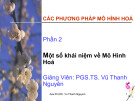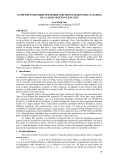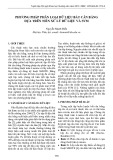
Lecture 31

Introduction to Data
Visualization
Definition of Data Visualization
Terms related to Data Visualization
Data Mining
Data Recovery
Data Redundancy
Data Acquisition
Data Validation
Data Integrity
Data Verification

Continued….
Data mining
analytic process designed to explore data
analyzing data from different perspectives
summarizing it into useful information
Data recovery
handling the data through the data from damaged, failed,
corrupted, or inaccessible secondary storage media
recovery required due to physical damage to the storage
device or logical damage to the file system

Continued….
Data redundancy
additional to the actual data
permits correction of errors
Data acquisition
process of sampling signals
measure real world physical conditions
converting the resulting samples into digital numeric values
Data validation
process of ensuring that a program operates on clean,
correct and useful data

Continued….
Data integrity
maintaining and assuring the accuracy and consistency of
data
ensure data is recorded exactly as intended
Data verification
different types of data are checked for accuracy and
inconsistencies after data migration is done
Data aggregation
information is gathered and expressed in a summary form
to get more information about particular groups


























